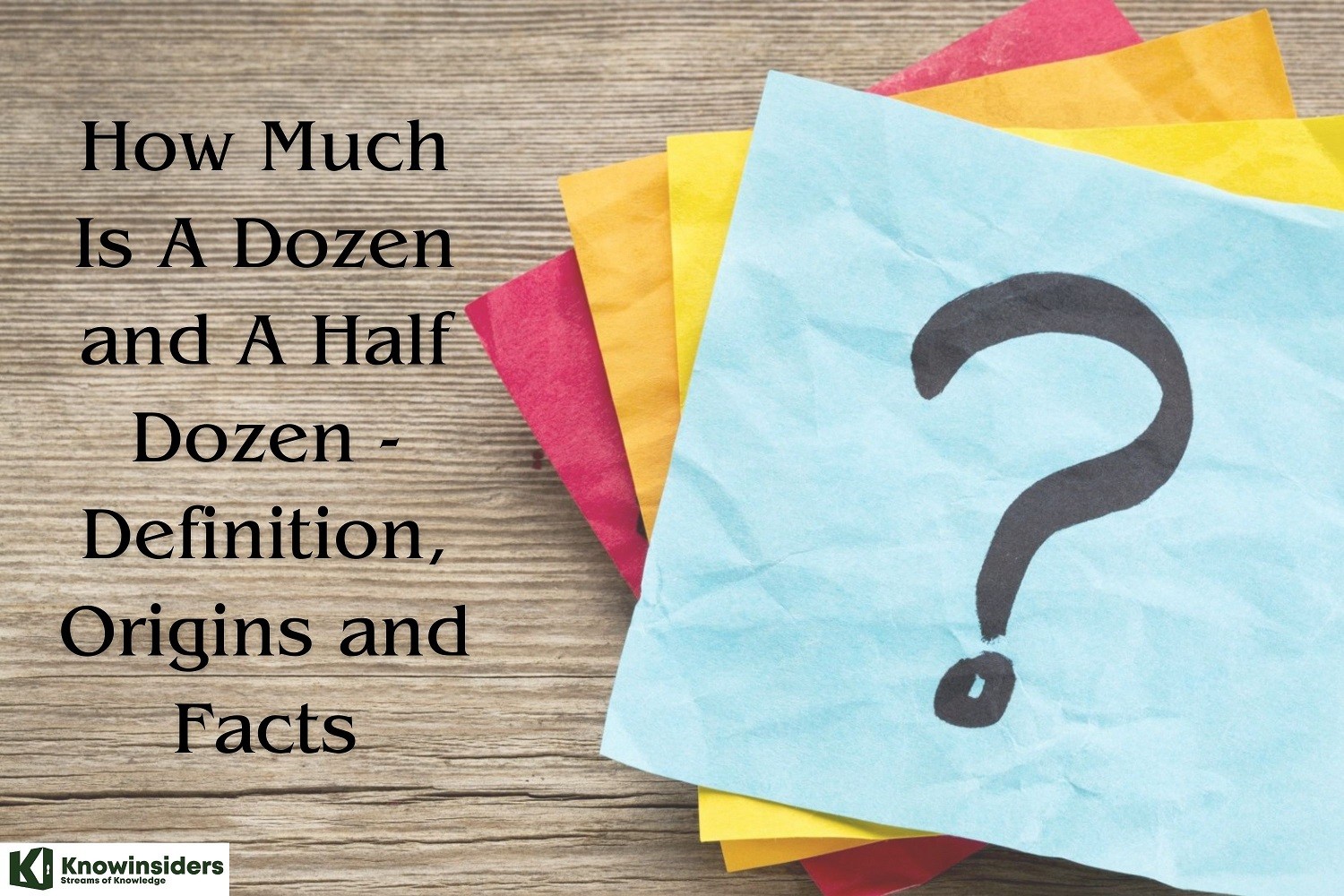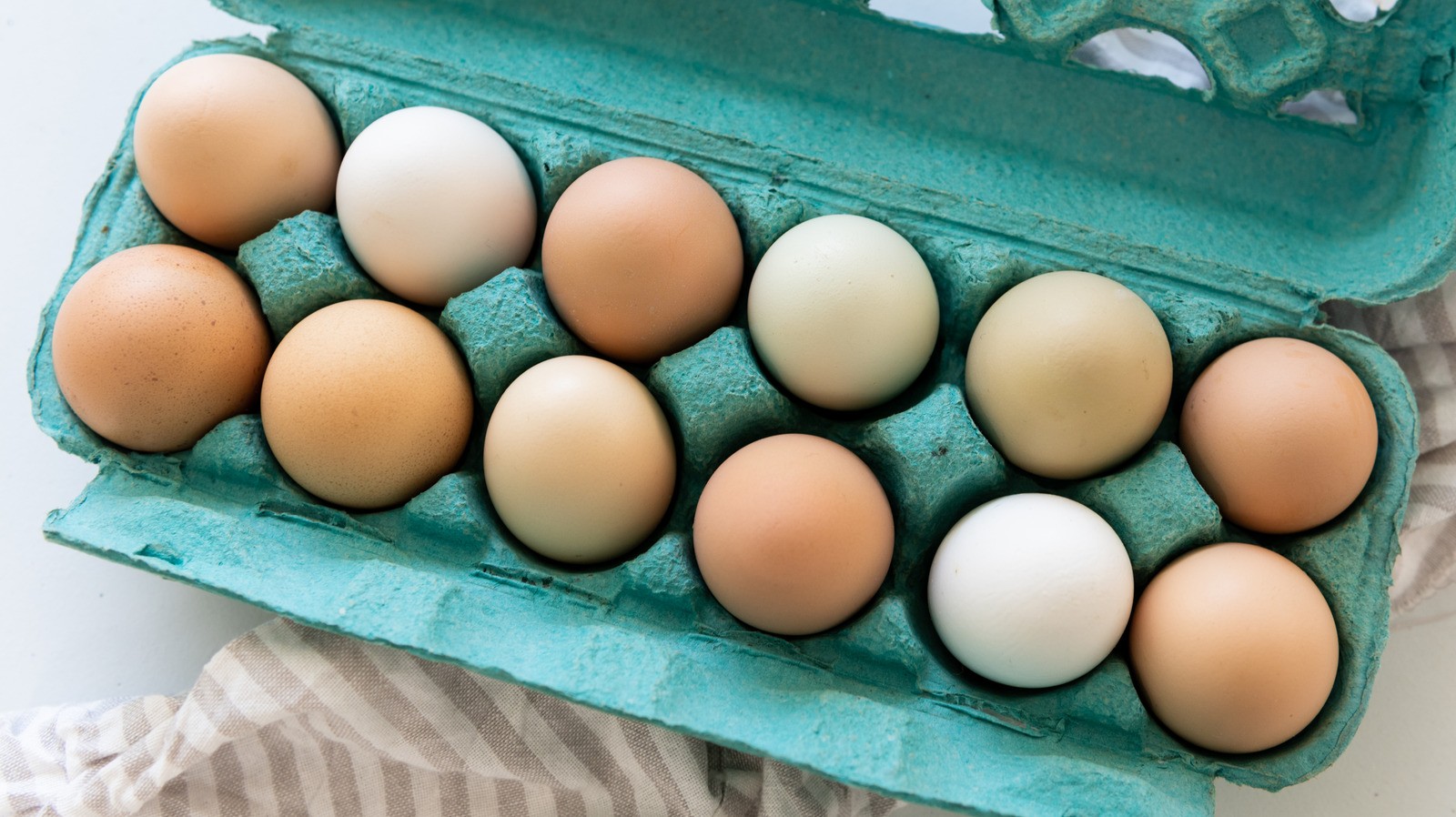How Much Is A Dozen and A Half Dozen - Definition, Origins and Facts
| Summary |
The concept of a dozen is deeply embedded in many aspects of daily life, commerce, and cultural practices all over the world. The term "dozen" comes from the word "douzaine," which means a group of twelve, and it has transcended mere numerical value to become a universally recognized unit of measurement. This historical quantity system has roots in ancient civilizations, where the number twelve was valued for its divisibility and occurrence in natural cycles, such as the 12 months of the year.
Over time, the dozen has remained relevant, simplifying trade, bulk purchases, and even linguistic expressions. Understanding how and why a dozen became such an important part of measurement systems provides fascinating insights into human society's evolution and our proclivity to organize the world around us into comprehensible chunks.
 |
| How Much Is A Dozen and A Half Dozen - Definition, Origins and Facts |
The Historical Origins of 'A Dozen'
The use of dozens as a unit of measurement dates back centuries and is deeply ingrained in the history of commerce and everyday life. This preference for counting by twelves stems from a variety of practical and cultural influences. Notably, the number 12 is highly divisible, dividing evenly into halves, thirds, quarters, and sixths. Such divisibility facilitated transactions and trade in an era when calculative aids were limited.
Many societies have historically preferred base-12 systems for these reasons. For example, the ancient Sumerians used a sexagesimal (base-60) system, which heavily influenced the use of dozens in later cultures. Furthermore, in medieval Europe, the dozen became a standard measure in markets, owing to its efficiency for bulk trading and its compatibility with existing numerical traditions.
Where Does The Term “Dozen” Come From?
The term "dozen" comes from the Old French word "dozaine," which means a group of twelve. This term itself traces back to the Latin word "duodecim," which directly translates to twelve. The use of twelve as a counting unit has been historically significant due to its divisibility and the number of lunar cycles in a year.
The number twelve has a practical utility in various cultural, religious, and historical contexts. For example, there are twelve months in a year, twelve signs of the zodiac, and traditionally, twelve units in a dozen were easy to divide into halves, thirds, or quarters, making it a convenient choice for trade and transactions. The continued use of "dozen" reflects its deep-rooted practicality and historical significance in both commerce and daily life.
How Much Is A Dozen and A Half Dozen?
A dozen is equal to 12 items. Therefore, a half dozen, which is half of a dozen, is equal to 6 items. If you combine a dozen and a half dozen, you would have 12 (a dozen) plus 6 (a half dozen), totaling 18 items.
How Much Is a Baker’s Dozen and Why?
The origin of the baker's dozen being 13 items instead of 12 is rooted in medieval England. During these times, strict laws were enforced concerning the weight and size of baked goods sold by bakers. These laws were intended to prevent customers from being cheated with undersized or underweight products.
To avoid penalties for accidentally selling bread that might be slightly underweight, bakers began the practice of adding an extra loaf to the standard dozen, ensuring they would not fall below the required legal standards. This extra loaf acted as a safeguard against potential fines and punishment, which could be severe.
Thus, the term "baker's dozen" became known as a measure of 13 items, a practice that provided a little extra to ensure compliance with the law and eventually turned into a customer-pleasing tradition in many bakeries.
How Much Is a Dozen Eggs?
 |
| Dozen Eggs |
The cost of a dozen eggs can vary widely depending on several factors such as location, the type of store, organic certification, and the conditions in which the hens are raised. For instance, in the United States, the price of a dozen eggs can range from around $1.50 to over $4.00.
The reasons for these price variations include:
Production Costs: Eggs from hens that are raised in free-range or organic environments typically have higher production costs due to more expensive feed and more spacious housing requirements.
Location: Prices can also vary by geographic location due to differences in the cost of living, transportation costs, and local demand.
Store Type: Prices may differ between discount supermarkets, specialty stores, and organic food stores.
Market Conditions: Factors like supply chain disruptions, increases in feed prices, or outbreaks of diseases like avian influenza can significantly affect egg prices.
Due to its mathematical convenience—a dozen is easily divisible by several numbers (2, 3, 4, and 6), selling eggs by the dozen has been a common practice since ancient times. This made it practical for trade and measurement.
Read More: How Much Currency Is There Across the Globe?
How Much Is a Dozen Roses?
The price of a dozen roses can vary widely based on several factors, including the type of roses, the time of year, and where they are being purchased. Here are some general price ranges:
Standard Roses: For a standard dozen of red roses, prices typically range from $20 to $50 at most florists.
Premium Varieties: More exotic or premium varieties of roses, such as long-stemmed or rare colors, can cost anywhere from $50 to $100 or more per dozen.
Seasonal Variations: Prices can spike around major holidays, especially Valentine's Day and Mother's Day, when the demand for roses is much higher.
Location: Prices may also vary based on geographic location, with roses potentially being more expensive in urban areas compared to rural areas.
These prices include the costs of cultivation, transportation, and the type of store that sells the roses. Florists and online retailers frequently add a markup to cover operational costs and offer services such as arrangement and delivery.
Relationship Between a Dozen, a Gross and a Score
The terms "dozen," "gross," and "score" all relate to specific quantities or groupings of items, each with historical roots in counting and commerce.
Dozen: As previously mentioned, a dozen refers to a group of twelve items. The dozen is a versatile unit commonly used due to its ability to be evenly divided into several portions (half, thirds, quarters).
Gross: A gross represents a larger quantity, specifically 144 items, which is equal to twelve dozen (12 x 12). The use of the gross as a counting unit is practical in wholesale and bulk purchasing, providing a standard measure that simplifies the buying and selling of larger quantities.
Score: A score refers to twenty items. This term is believed to originate from the Old Norse word "skor," meaning a notch or tally. The use of scores for counting dates back centuries, with one of the most famous references being in Abraham Lincoln's Gettysburg Address ("Four score and seven years ago..."), indicating 87 years.
The relationship between these units reflects different layers of counting used historically and today in various trades. While the dozen and gross are closely related because they are multiples of 12, the score provides an alternative based on the number 20, demonstrating diverse counting systems adapted to different cultures and economic needs.
| Number | Quantity units names |
|---|---|
| 2 | a couple / a pair / a brace |
| 6 | half a dozen |
| 12 | a dozen |
| 13 | a baker's dozen |
| 20 | a score |
| 144 | a gross (12 dozen) |
| 1728 | a great gross (12 gross) |
Practical Applications And Examples Of Dozens In Everyday Life
 |
| Baker's Dozen |
In everyday life, the concept of a dozen pervades our routines and transactions in more ways than we might initially realize. For instance, when shopping for groceries, it's common to encounter eggs sold by the dozen, providing a convenient quantity for weekly consumption. Similarly, bakeries often offer deals on pastries or donuts by the dozen, catering to our penchant for sharing treats during office meetings or family gatherings.
Beyond food, the term seamlessly extends into other areas such as fashion and household goods; socks and pencils are frequently packaged in dozens to match usage patterns and provide value. This method of quantification not only simplifies purchasing decisions but also taps into cultural practices of bulk buying and sharing, illustrating how deeply intertwined the concept of a dozen is with our daily lives.
Comparing Dozens To Other Quantitative Measurements
When considering the concept of a dozen, it is critical to understand how it interacts with other quantitative measurements. A dozen represents a group of twelve units, as opposed to more commonly used bases such as the decimal system, which revolves around the number ten. For example, there is no direct correlation between a dozen and metric measurements because metrics are based on powers of ten.
However, dozens provide a useful grouping in everyday life and specific industries such as farming or baking, which are difficult to replicate using metric or standard measures.
In contrast, in historical contexts or specific trades such as jewelry (where things are frequently counted in carats or grains), dozens may appear less intuitive. Furthermore, when compared to bulk quantities or wholesale units in which items are counted in hundreds or thousands, dozens serve as a more approachable and human-scale unit of measurement that bridges the gap between individual items and massive amounts.
In modern times, these terms are still commonly used. Bakeries sell goods in dozens and half-dozens, and eggs are frequently packaged in these sizes. During the holiday season, gift packs or decorations are typically sold in quantities of dozens to facilitate bulk purchasing and distribution.
What Is a Dozen of Dozens?A dozen of dozens, often referred to as a "gross," is equal to 144 items. This is calculated by multiplying 12 (one dozen) by 12 (the number of dozens). So, 12 dozens make up one gross. The term "gross" is commonly used in commerce and bulk purchasing, particularly for items like pencils, eggs, or other small goods that are frequently sold in large quantities. |
Fun Facts About a Dozen
Historical Significance
The use of twelve as a counting system dates back to at least the Mesopotamian civilization, which used a base-60 (sexagesimal) number system. Twelve was a sub-base in this system, likely due to the ease of dividing it into multiple fractions.
A Baker’s Dozen
You might have heard the term "a baker's dozen" which refers to 13 instead of 12. This originated as a way for bakers to avoid being penalized for selling underweight bread. By throwing in an extra, they ensured compliance with strict trade laws.
Cultural References
In many cultures, the number twelve holds religious or mythological significance. For example, there are twelve gods of Olympus in Greek mythology, twelve tribes of Israel in the Bible, and twelve Jyotirlingas (sacred shrines) in Hinduism.
Practical Uses
Beyond baking and mythology, dozens are used to simplify purchases of daily items. Eggs, for instance, are almost universally sold by the dozen or half dozen, making it easier for consumers to buy in bulk.
Divisibility
One of the reasons twelve became such a popular base number in various systems is its high divisibility; it can be divided by 2, 3, 4, and 6 without resulting in fractions, which makes it incredibly versatile for trade and commerce.
Legal and Trade History
In medieval England, the dozen was so commonly used in trade that statutes regulating the sale of goods often specified measurements by the dozen.
Educational Tool
In schools, teaching about dozens can be a practical way to introduce children to concepts of multiplication and division, as well as the use of different units of measure.
Conclusion: The Enduring Relevance of Dozen and Half Dozen
The persistent utilization of the terms "dozen" and "half dozen" underscores their practicality in everyday existence. These terms demonstrate how historical concepts can continue to be applicable and valuable in today's society, by aiding in trade in ancient markets and streamlining modern shopping experiences.
Counting in multiples of twelve, such as dozens and half dozens, continues to be a practical method in various aspects of life, whether it be purchasing bagels or distributing party favors.
 How Many Inches Are In A Yard and How to Convert Yards to Inches? How Many Inches Are In A Yard and How to Convert Yards to Inches? In the realm of measurements, understanding the relationship between different units is fundamental, especially in fields such as fabricating, carpentry, and even in everyday shopping ... |
 How Many Weeks Are There In A Month? How Many Weeks Are There In A Month? One of the common inquiries about time management is understanding how many weeks there are in a month. This seemingly simple question can have various ... |
 How to Buy A Gun in the US with 2 Steps in 15 Minutes How to Buy A Gun in the US with 2 Steps in 15 Minutes You'll find that Americans are always very courteous and will use expressions like "sorry" and "thank you." This is due to the fact that they ... |


























